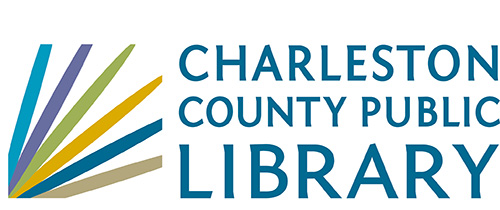Menu
×
Main Library
9 a.m. - 6 p.m.
Phone: (843) 805-6930
West Ashley Library
9 a.m. - 4 p.m.
Phone: (843) 766-6635
Folly Beach Library
Closed for renovations
Phone: (843) 588-2001
John L. Dart Library
9 a.m. - 6 p.m.
Phone: (843) 722-7550
St. Paul's/Hollywood Library
9 a.m. - 5 p.m.
Phone: (843) 889-3300
Mt. Pleasant Library
9 a.m. – 6 p.m.
Phone: (843) 849-6161
Dorchester Road Library
9 a.m. - 6 p.m.
Phone: (843) 552-6466
Edgar Allan Poe/Sullivan's Island Library
9 a.m. - 6 p.m.
Phone: (843) 883-3914
John's Island Library
9 a.m. - 6 p.m.
Phone: (843) 559-1945
McClellanville Library
Closed for renovations
Phone: (843) 887-3699
Edisto Library
9 a.m. - 3 p.m.
Phone: (843) 869-2355
Wando Mount Pleasant Library
9 a.m. - 6 p.m.
Phone: (843) 805-6888
Otranto Road Library
9 a.m. - 6 p.m.
Phone: (843) 572-4094
Hurd/St. Andrews Library
9 a.m. - 6 p.m.
Phone: (843) 766-2546
Baxter-Patrick James Island
9 a.m. - 6 p.m.
Phone: (843) 795-6679
Bees Ferry West Ashley Library
9 a.m. - 6 p.m.
Phone: (843) 805-6892
Village Library
9 a.m. - 6 p.m.
Phone: (843) 884-9741
Keith Summey North Charleston Library
9 a.m. – 6 p.m.
Phone: (843) 744-2489
Mobile Library
9 a.m. - 5 p.m.
Phone: (843) 805-6909
Today's Hours
Main Library
9 a.m. - 6 p.m.
Phone: (843) 805-6930
West Ashley Library
9 a.m. - 4 p.m.
Phone: (843) 766-6635
Folly Beach Library
Closed for renovations
Phone: (843) 588-2001
John L. Dart Library
9 a.m. - 6 p.m.
Phone: (843) 722-7550
St. Paul's/Hollywood Library
9 a.m. - 5 p.m.
Phone: (843) 889-3300
Mt. Pleasant Library
9 a.m. – 6 p.m.
Phone: (843) 849-6161
Dorchester Road Library
9 a.m. - 6 p.m.
Phone: (843) 552-6466
Edgar Allan Poe/Sullivan's Island Library
9 a.m. - 6 p.m.
Phone: (843) 883-3914
John's Island Library
9 a.m. - 6 p.m.
Phone: (843) 559-1945
McClellanville Library
Closed for renovations
Phone: (843) 887-3699
Edisto Library
9 a.m. - 3 p.m.
Phone: (843) 869-2355
Wando Mount Pleasant Library
9 a.m. - 6 p.m.
Phone: (843) 805-6888
Otranto Road Library
9 a.m. - 6 p.m.
Phone: (843) 572-4094
Hurd/St. Andrews Library
9 a.m. - 6 p.m.
Phone: (843) 766-2546
Baxter-Patrick James Island
9 a.m. - 6 p.m.
Phone: (843) 795-6679
Bees Ferry West Ashley Library
9 a.m. - 6 p.m.
Phone: (843) 805-6892
Village Library
9 a.m. - 6 p.m.
Phone: (843) 884-9741
Keith Summey North Charleston Library
9 a.m. – 6 p.m.
Phone: (843) 744-2489
Mobile Library
9 a.m. - 5 p.m.
Phone: (843) 805-6909
Patron Login
menu
Item request has been placed!
×
Item request cannot be made.
×
 Processing Request
Processing Request
Physically distant but socially close? Changes in non-physical intergenerational contacts at the onset of the COVID-19 pandemic among older people in France, Italy and Spain.
Item request has been placed!
×
Item request cannot be made.
×
 Processing Request
Processing Request
- Author(s): Arpino, Bruno; Pasqualini, Marta; Bordone, Valeria
- Source:
European Journal of Ageing; Jun2021, Vol. 18 Issue 2, p185-194, 10p- Subject Terms:
INTERGENERATIONAL relations; SOCIAL media; AGE distribution; MENTAL health; VIDEOCONFERENCING; SOCIOECONOMIC factors; SURVEYS; COMPARATIVE studies; TELECOMMUNICATION; DESCRIPTIVE statistics; SOCIAL distancing; STATISTICAL sampling; LOGISTIC regression analysis; STAY-at-home orders; COVID-19 pandemic; EDUCATIONAL attainment; MIDDLE age; OLD age - Source:
- Additional Information
- Subject Terms:
- Abstract: Physical distancing is intended to mitigate the spread of the SARS-CoV-2 virus. However, the impact of a decrease in face-to-face contacts on non-physical social contacts of older people remains unclear. In particular, we focus on intergenerational contacts that are especially relevant for older people's mental health. Our analyses rely on an online quota sampling survey conducted in France, Italy and Spain during April 14–24, 2020. We considered the subsample of individuals aged 50 + (N = 4207). We calculated post-stratification weights based on official statistics and used logistic regressions to analyze how changes in intergenerational contacts differed by socioeconomic factors and to what extent non-physical contacts (via phone, social media, etc.) have compensated the reduction in face-to-face contacts. Finally, the change in digital devices' use has been explored as a consequence of both decreased physical intergenerational contacts (PIC) and increased non-physical intergenerational contacts (NPIC). We found that about 50% of older people have increased their NPIC during the first lockdown. Younger individuals, those with medium level of education, and those economically better off displayed higher probabilities of increased NPIC as compared to their counterparts. NPIC increased especially for individuals whose face-to-face contacts decreased, particularly so if this happened with respect to contacts with children. A large share of older people has increased their use of video calls and instant messages, while only some increased the use of social media. These findings are relevant to understand how intergenerational contacts changed during the pandemic and may be central to better plan future outbreak responses. [ABSTRACT FROM AUTHOR]
- Abstract: Copyright of European Journal of Ageing is the property of Springer Nature and its content may not be copied or emailed to multiple sites or posted to a listserv without the copyright holder's express written permission. However, users may print, download, or email articles for individual use. This abstract may be abridged. No warranty is given about the accuracy of the copy. Users should refer to the original published version of the material for the full abstract. (Copyright applies to all Abstracts.)
Contact CCPL
Copyright 2022 Charleston County Public Library Powered By EBSCO Stacks 3.3.0 [350.3] | Staff Login


No Comments.